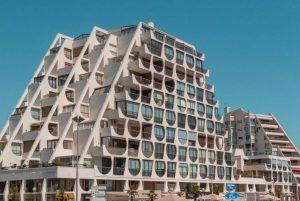 Would you invest in a property selling at 4.5% cap rate? Cap (Capitalization) Rate is a number that is calculated as Net Operating Income divided by Purchase Price. It is meant to indicate the profit or income margin you will have if you purchase the property, the rate of return you will get if you buy the property with all cash.
Would you invest in a property selling at 4.5% cap rate? Cap (Capitalization) Rate is a number that is calculated as Net Operating Income divided by Purchase Price. It is meant to indicate the profit or income margin you will have if you purchase the property, the rate of return you will get if you buy the property with all cash.
Effectively, though, it is an indicator of market sentiment. It tells you what the market thinks of this property. There’s so much more that goes into a financial evaluation of a property than cap rate, but cap rate is a key metric.
Keep in mind, if you are borrowing money to buy the property, Net Operating Income is before the mortgage payment. Your NOI needs to cover the mortgage. If you’re borrowing 80% of the value of the property, or even 75%, and the cap rate is low, NOI may not cover the mortgage. And worse, the lender will still want some income left over after you pay the mortgage.
Without getting into the details of debt coverage ratios, let’s focus on “good” cap rates and explore what that means.
Most of us have heard that a target cap rate is around 8%. That number generally means you have sufficient funds to pay a mortgage of 75% LTV and return income to your investors. But not always.
What if the property is in a fast-growing city? Population and jobs are increasing very quickly and they all need a place to live, so rents are going up. Who doesn’t want to invest in that. But that’s the problem, everyone wants to put their money there, everyone wants in on it, and ultimately demand is what determines pricing. Investors don’t need an 8% cap rate, or a 7%, 6%, or even 5% cap rate. They’ll settle for less.
Why? Because when they go to sell, the market itself will have driven the property value higher. Rents are going up on their own. You don’t even need to invest in renovations. It’s all just going up and it will keep going up for as long as you plan to hold the property. That might be a safe assumption, but nothing keeps going up like that forever (see previous section – Seattle).
If you’re investing in a property with a low cap rate, say 4.5%, a conventional lender probably won’t lend you 75% of the value. That means you bring in more capital and borrow something less, maybe 50-60% LTV, or you get a different kind of loan, maybe a bridge loan at a higher interest rate, then refinance in a couple of years at a higher valuation. That’s not unreasonable and many successful investors do this.
It is possible that you can underwrite a deal at a 4.5% cap rate and make it work. But what if you have renovations you plan to do? Let’s look at a simple calculation. As an example, you can spend $10,000 to renovate a unit and the rent increases by $100. That’s $1,200 a year in additional NOI. Remember cap rate = NOI divided by price, so therefore price = NOI divided by cap rate. You can use the same equation to say added value = added income divided by cap rate. If the cap rate on this property is 8%, assuming you will eventually sell it at the same 8% cap rate, the value you added is $1,200 / 8% = $15,000. But what if the cap rate is 4.5%? Added value is $1,200 / 4.5% = $26,667. For the same $10,000 investment. That adds up quickly and makes you look like a genius!
That’s why smart investors compete voraciously for top-tier, low-cap properties, ones that look great, are in a great area, but have outdated interiors and amenities.
Generally low cap markets are stable markets. Until they’re not. If you think the big coastal cities with low cap rates are stable and will hold up in a recession, go for it. But if you think the trend is away from those population centers, a secondary or tertiary market might be your better option.
